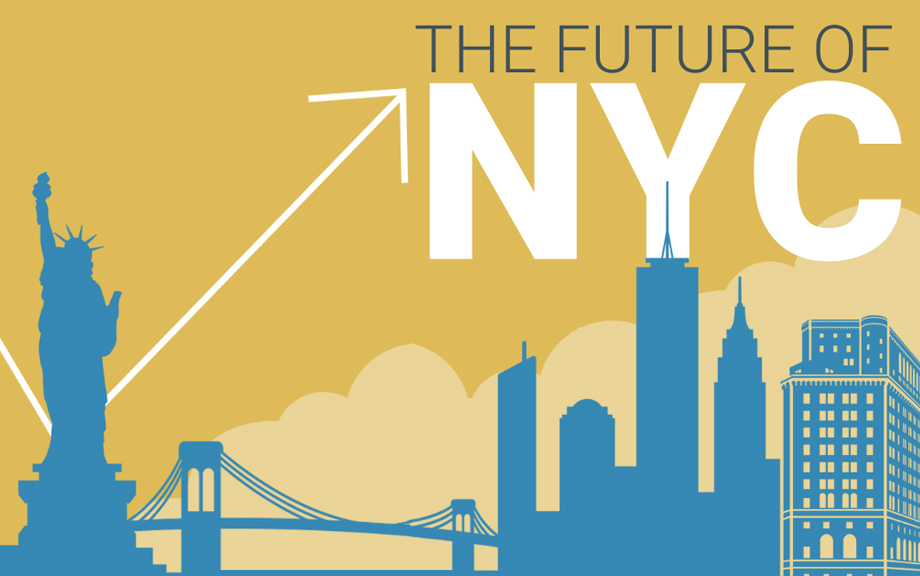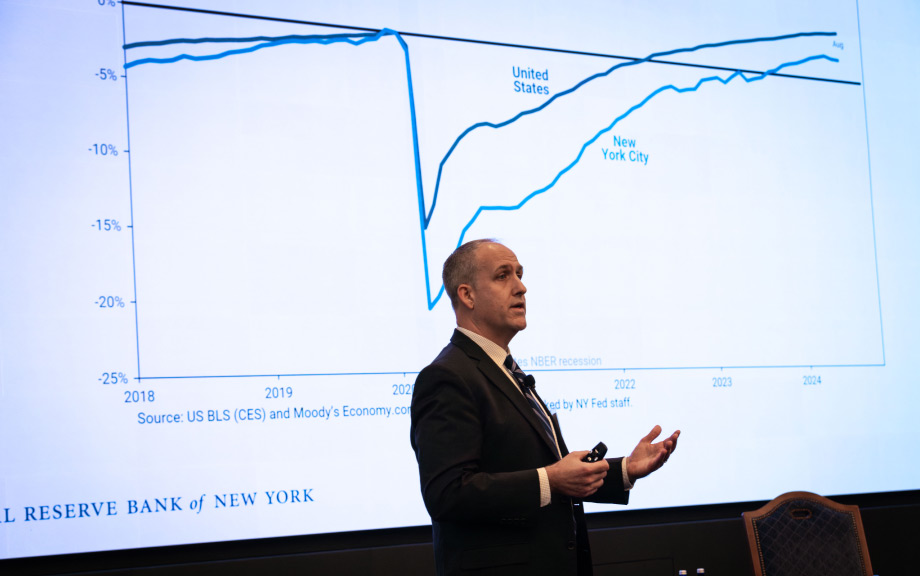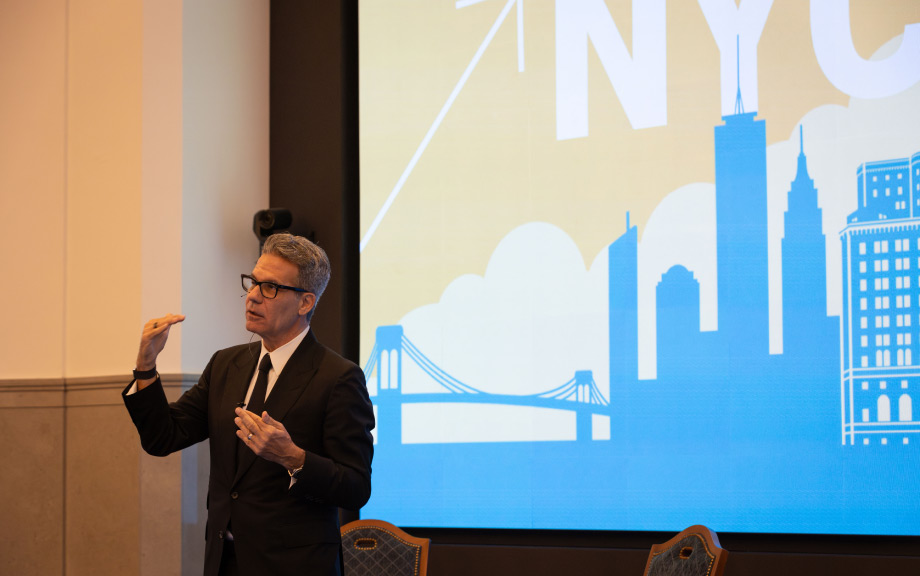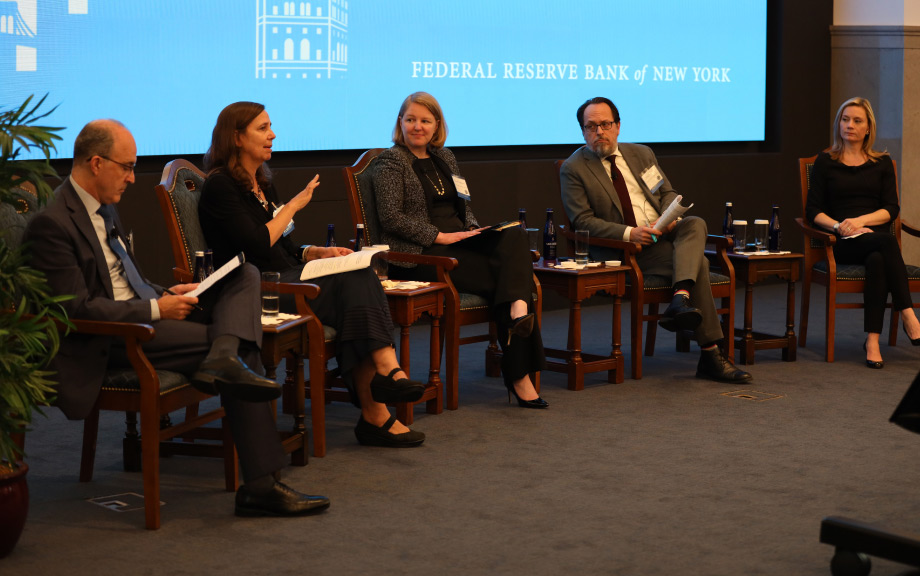
On October 4, the New York Fed hosted “The Future of New York City: Focus on Jobs.” Participants discussed New York City’s post-pandemic employment rebound, the geographic redistribution of jobs, and the workforce development challenges the city faces.
Post-Pandemic Changes

In opening remarks, New York Fed President John C. Williams revisited the pessimistic forecasts for the city’s labor market from the beginning of the pandemic, saying they did not age well. Instead, the city has had remarkable rebound, recovering all the jobs it lost during the pandemic shutdowns and then some. Now, President Williams said, the question is what kind of future we want to build for the city.
Job growth in New York City started to outpace the national rate of growth in mid-2021, according to a presentation by New York Fed research economist Jaison Abel. But the city’s job growth has been polarized. Lower-wage jobs grew slightly since the pandemic, with all the net gains in healthcare support occupations. Higher-wage jobs grew more strongly during this period, led by growth in management, finance, and legal occupations. The number of middle-wage jobs in the city—including in production, administrative support, and sales occupations—has declined since the pandemic, wiping out all gains made in that area during the expansion that followed the Great Recession, Abel said.
The geographic distribution of New York City’s jobs has also shifted. Job growth has been stronger in the outer boroughs and areas surrounding the city, while persistent weakness remains in Manhattan, Abel said.
The Changing Role of Cities

The most pronounced changes to cities have been in their central business districts, said keynote speaker Richard Florida, a professor at the University of Toronto’s Rotman School of Management
The post-pandemic shift to remote office work has resulted in lower office occupancy, which in turn impacts surrounding businesses, Florida said. Florida said at least a quarter of office workers now favor using a co-working space, cafe, friend’s house, or library as their primary place of work over a traditional office. Because of this, cities need to reimagine downtown business districts as destinations for human connection rather than work, he said.
New York City’s unique features leave it well positioned to continue its post-pandemic job growth, he said. One of those assets is intense venture capital interest in New York City companies, part of a 20-year trend of high-tech startups moving from suburban to urban centers, he said.
Challenges and Opportunities

Speakers questioned whether workers in newly created low-wage jobs can keep up with the cost of living in New York City and the surrounding area. Creating new middle-class jobs in healthcare, biotech, and green energy will require multiyear partnerships between government, nonprofits, and businesses, they said. The city and the region should also invest in housing, healthcare, and childcare to attract and retain workers, participants said.
In addition to offering better job training, policymakers and employers should aim to create opportunities close to potential workers and communicate changes in the job market to targeted populations, speakers said. Participants said newer workforce development programs, such as online education and micro-credentialing, are especially promising, as are programs that combine apprenticeships, degrees, and skill-building.
Conclusion
Given New York City’s size and its importance to the nation’s economy, changes in the city’s job market can be felt well -beyond its borders, participants said.
“The foundational aspects that have made New York so successful for so long are still present,” President Williams said. “The excitement and enthusiasm that draw people to live and work here have not changed. At the same time, many of the challenges have not changed either. For example, the high cost of living and housing availability are still predominant concerns, among others.
“The entertainment, arts, businesses, culture, and landmarks that we have here in New York cannot be replicated elsewhere,” he said. “But those experiences can only be had if there are jobs and a healthy economy to support it all. It’s important that we invest in the study of the challenges and opportunities for employment in this city, so that we can build the future.”
Watch the full event here.
Craig Bradstock is a business operations specialist in the Communications and Outreach Group at the New York Fed.
Nathaniel Kressen is a digital strategy specialist in the Communications and Outreach Group at the New York Fed.
The views expressed in this article are those of the contributing authors and do not necessarily reflect the position of the New York Fed or the Federal Reserve System.










